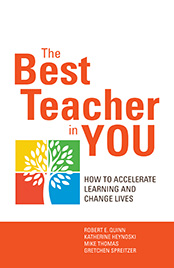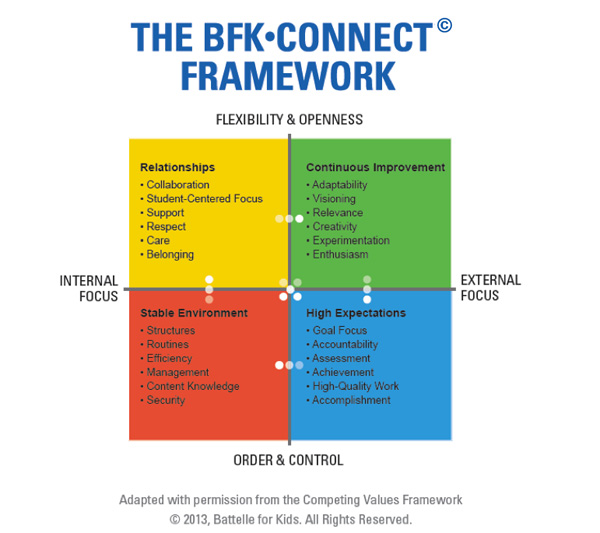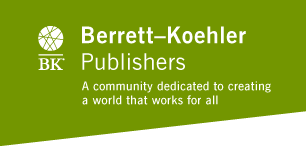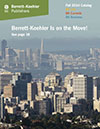Ground-breaking study on classroom excellence
 Suppose you examined a block of data, figured out who were the best teachers in the country, and summoned them all to participate in a study about classroom excellence. Would the teachers all have different methods, or would there be common themes? What would the teachers say? Suppose you examined a block of data, figured out who were the best teachers in the country, and summoned them all to participate in a study about classroom excellence. Would the teachers all have different methods, or would there be common themes? What would the teachers say?
Bob Quinn, Katherine Heynoski, Mike Thomas, & Gretchen Spreitzer are collaborating to share the results of just such a study in their book, The Best Teacher In You. Turns out, most of the teachers say…
“What do you mean, I’M excellent?”
For many teachers in their study, being told they were excellent was a huge surprise. They had no way of comparing themselves to other teachers, and the request to join the study was often the first time they’d learned they were objectively high performers.
Most industries recognize & reward high achievers, and encourage other employees to learn from the best. In schools, it’s often a secret who’s doing the best job with their students. There’s also a widespread myth in our culture that excellent teachers are “just born that way.”
The Best Teacher In You shatters that myth to pieces. The coauthors found that excellent teachers DO all have certain things in common. Any ordinary person can reach out for those qualities. You can discover the best possible teacher hidden inside of you.
So what do the best teachers have?
Balance. They balance being close with their students, with having high expectations of students. They balance flexibility & creativity with clear rules and expectations. The authors summarize it brilliantly using their BFK-Connect © Framework (see illustration below.) For a detailed explanation of the framework, you’ll have to buy their book and read the wonderful stories from their teacher interviews. However, the illustration gives the general idea.

How I realized my least favorite teacher was actually one of the greats
Most people feel more “at home” in one quadrant of the chart than the other quadrants. For example, I love using my creativity and enthusiasm, but I can sometimes find it challenging to keep to structures & routines.
In fifth grade, I had a teacher who definitely lived in the “Stable Environment,” quadrant of our authors’ chart. She was all about the structures and the routines; so much so, you could even get in trouble for failing to push your chair entirely under your desk.
Her essay topics were very narrow and specific, such as “Tell us what you did over vacation,” and I disliked writing them because they didn’t let my imagination fly. But one day she invited a guest speaker to the classroom to tell us about forestry, and the guest gave us the assignment, “Write anything you like about trees.” I got really excited and wrote something five times as long as I usually wrote.
My teacher told my mother that my tree assignment was shockingly better than my run-of-the-mill essay. “Why is that?” she asked my mother. My mom explained, “Charlotte does better when she has freedom.”
The next year, I was chatting with a younger friend who had entered this teacher’s class. “Every week we have to write three pages about anything we want,” she told me. “I hate it! I can never think of any good ideas to write about.”
I stopped in my tracks, completely shocked. I realized three things.
- My “nemesis” of a teacher had completely changed her methods for teaching writing (perhaps partly because of her experience with me?)
- The freedom I had longed for was not appreciated by my friend. My friend would have been happier being told exactly what to write.
- A teacher I had believed to be totally rigid, was experimenting with change. I had completely misjudged her.
In that moment, my fifth-grade teacher changed from someone I resented, to someone I very much admired. I thought to myself, “I hope, when I grow up, I’m like that. Not too tied to doing things ‘my way.’ Willing to try something new and different.”
Every child is very, very different. We tend to like teachers and bosses whose styles match our own. But the teachers who do the best job of serving every student— in all their diverse learning styles— are teachers who can live in all four quadrants. Those are the teachers who give everyone what they need.
The BFK-Connect framework has given me a new way of understanding my elementary school experiences. It all makes sense now.
How teachers are using the BFK-Connect Framework
The authors are training many teachers to use this framework— and the teachers love it. It gives them a way to talk about getting better, which isn’t unpleasant and judgmental. When it’s laid out like this, people see all the quadrants have value. They can say, “I’m stronger in the blue area, but my colleague is stronger in the yellow area. How can I learn from my colleague?”
The teachers are constantly pressured to optimize the “High Expectations,” quadrant, make their students get better test scores. But if ALL you care about is scores, then you fail. This model shows teachers they succeed most, when they work on all four quadrants at once.
The authors told us that in inner-city schools, the “relationships” quadrant was particularly important. Teachers who didn’t build strong relationships with their students, had no hope of doing anything about the test scores.
Good teachers never stop trying to get better
One powerful outcome of the authors’ study was that the best teachers never stop working on themselves. Whether they’ve been teaching for five years or 35, they’re always looking for ways to improve. (That’s why I think my fifth-grade teacher was in actuality one of the greats, even though I didn’t appreciate her at the time.)
One of the authors’ favorite stories from the book underlines the importance of constantly improving. A young teacher, Aaron, was struggling with classroom management. In the end, he managed to successfully discipline a troublesome student named Joe. Aaron felt pretty proud of himself… but at the end of the year, Aaron got a note from Joe which shook his complacency.
Let’s sneak a peek at the author’s manuscript and read what Aaron said to Joe. “In the note, Joe thanked Aaron for teaching him and apologized for his behavior during the school year. Joe closed the note with a sentence that shattered Aaron’s newly gained confidence: ‘I want to let you know that I have a sister who is coming to your class next year . . . please don’t give up on her the way you gave up on me.’” This note changed Aaron's life, stayed with him for dozens of years.
I think it’s very difficult to be a teacher. Teaching troublemakers, teaching people who are very different from you, managing all the different learning styles. The key is to continuously improve, to never give up.
The sad thing is that the best teachers are not even aware of how great they are. I hope The Best Teacher in You helps all teachers out there with its encouragement, its support, and its help.
|
 0 items in cart
0 items in cart


 Suppose you examined a block of data, figured out who were the best teachers in the country, and summoned them all to participate in a study about classroom excellence. Would the teachers all have different methods, or would there be common themes? What would the teachers say?
Suppose you examined a block of data, figured out who were the best teachers in the country, and summoned them all to participate in a study about classroom excellence. Would the teachers all have different methods, or would there be common themes? What would the teachers say? 







